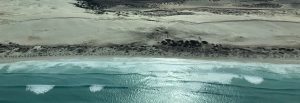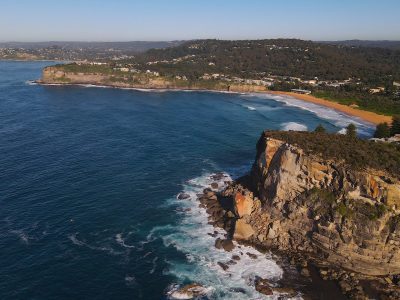SoE 2021 and Coasts
The 244 page Coasts chapter in the 2021 Australian State of the Environment Report has four key findings on Australian coasts: 1) they are a zone of concentrated biodiversity and productivity; 2) they are under pressure; 3) they will be profoundly impacted by climate, particularly sea-level rise; and 4) they need a consistent and coordinated management approach involving Traditional Custodians. These findings are set against a background of continuing deterioration in the condition of the Australian environment.
We welcome more emphasis on the importance of engaging Indigenous communities in the stewardship of land and sea country in the context of shared responsibilities requiring collective governance to protect and sustain natural, cultural, and social richness and values. It is interesting to note that ‘empowering indigenous leadership’ was the first recommendation in the recent independent report Sustainable Oceans and Coasts National Strategy, 2021-2030.
When Minister Plibersek released the 2021 SOE at the Press Club on 19 July, 2022 she acknowledged the first three of the four key findings in the Coasts chapter stressing the ‘importance of coastal vegetation such as mangroves and tidal marshes for blue carbon’ and the ‘need to protect the coastline from rising waters and storm surges’. The Minister also commented on the decline in health of the Great Barrier Reef noting the occurrence of mass coral bleaching events since the last SOE report and the impact of warming temperatures on the south coast kelp beds,
The fourth key finding on a coordinated management approach, however, was more problematic for the Minister to address as there is no national coastal policy or national coastal legislation and there is a well-documented lack of national leadership in this area (see for example Clarke and Harvey 2013, Harvey 2016, Thom 2022).
The Minister’s speech touched on some important points related to improved management. For example, she acknowledged that the former government had cut funding to the federal environment department by 40%. This created delays in federal environmental decisions which were 116 days behind schedule for new projects. It is relevant to note that the department used to have its own Oceans and Coasts Office back in the 1990s. This no longer exists. Any coastal expertise has disappeared together with a dramatic loss of corporate memory.
The Minister noted that the national environmental legislation, the EPBC Act needs an overhaul as recommended by the 2020 Samuel Review. Plibersek promised that the government would prepare a response to this review by the end of 2022. The Minister also pledged support for new investment in blue carbon, restoration of mangroves, tidal marshes and seagrasses.
The challenge of creating a coordinated national approach to coastal management, particularly the recognised need to protect the coast, remains a big problem as this requires cooperation and collaboration between the federal government and states and territories.
One option is to adopt a region-based approach as suggested by the Samuel Review and discussed in Bruce Thom’s blog 217. Plibersek acknowledges the need for an immediate start to improve regional planning. Another coordinating mechanism could be to revisit elements of the National Cooperative Approach to Integrated Coastal Management and its Implementation Plan (2006) which were agreed to by all governments but failed due to a lack of funding and resources.
It is important to embrace a process that includes cumulative impact issues. The SOE report notes problems associated with cumulative impacts from fires and land clearance can affect coastal estuaries as does continued extraction of freshwater for irrigation (Thom et al., 2018).
Some positive news emerges in the report reflecting interest in coastal issues from a population that clings close to its coastal fringe. Perhaps an awareness to address concerns on impacts of pollution leads to a view that there is an improvement in addressing problems of pollution. The case study of work on making seawalls more ecologically friendly in Sydney Harbour indicates such an interest but continued growth of population around our estuaries still creates pressures on waterway health from stormwater and river flood discharges.
We have commented on a few issues from the Coasts chapter but we encourage readers to take time reading some of the other 11 chapters from this comprehensive SOE report.
Nick Harvey and Bruce Thom
Words by ACS Chair Nick Harvey and Prof Bruce Thom. Please respect the authors’ thoughts and reference appropriately: (c) ACS, 2022. For correspondence about this blog post please email admin@australiancoastalsociety.org.au
#220



 Human Rights and Beaches
Human Rights and Beaches